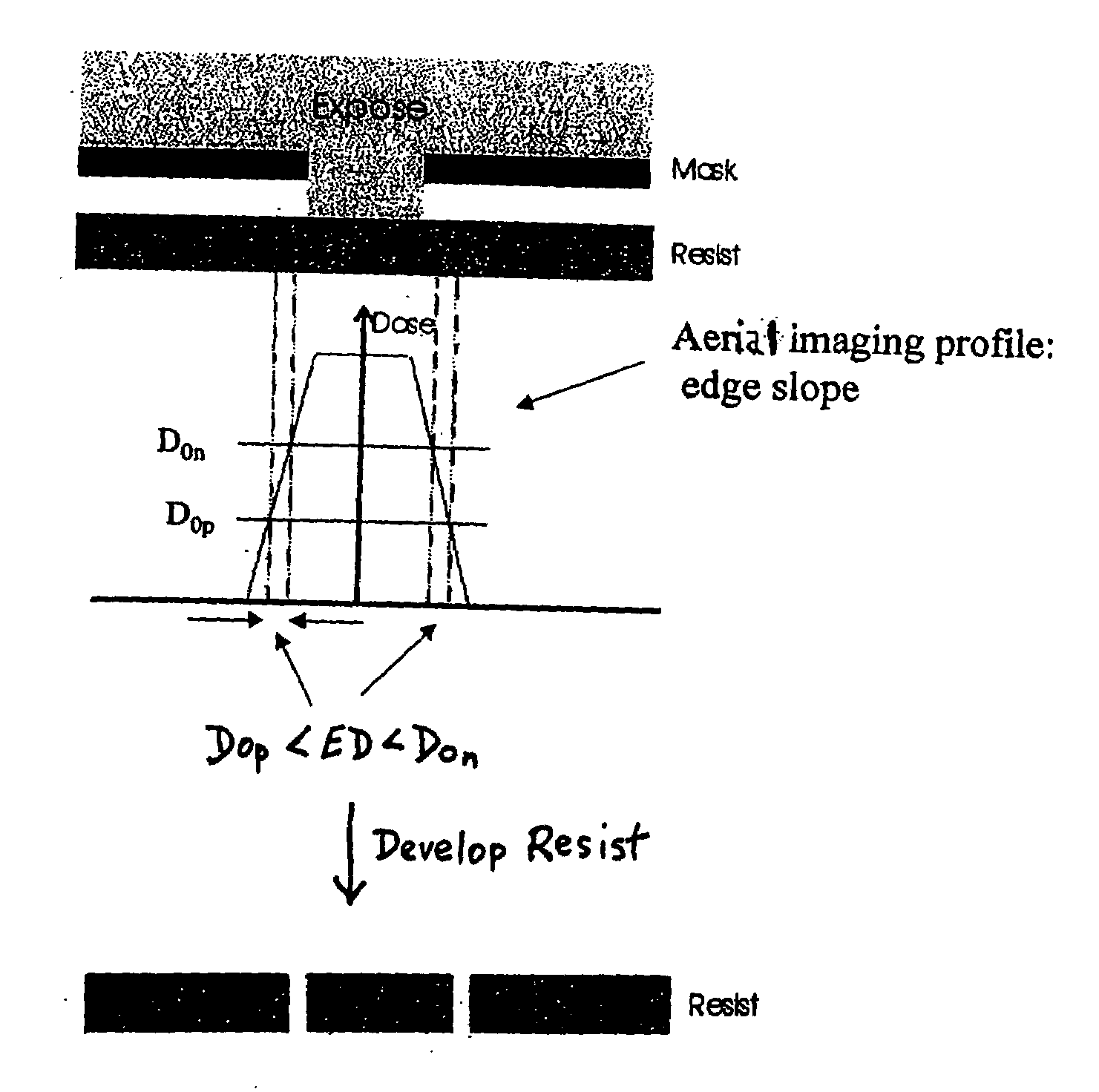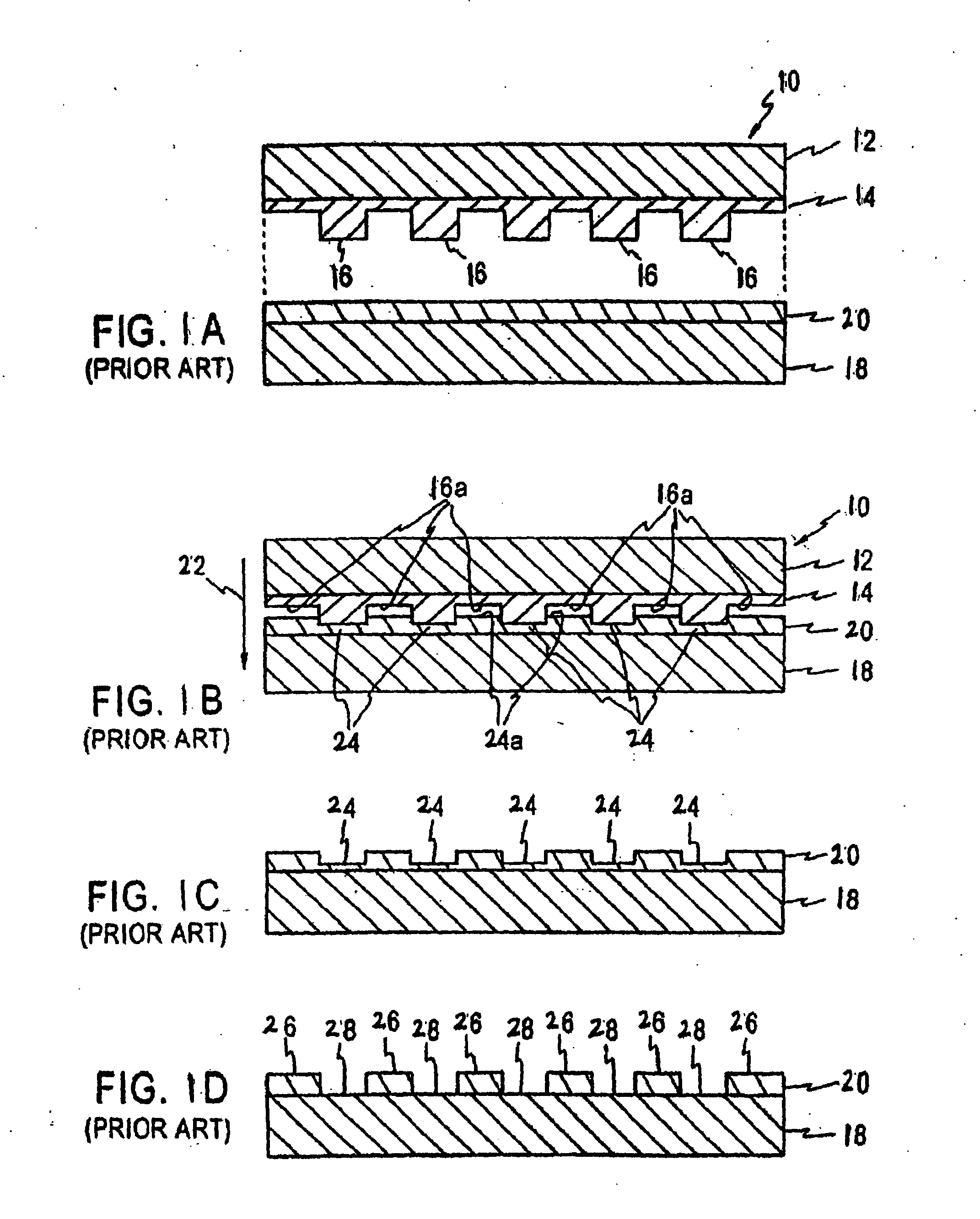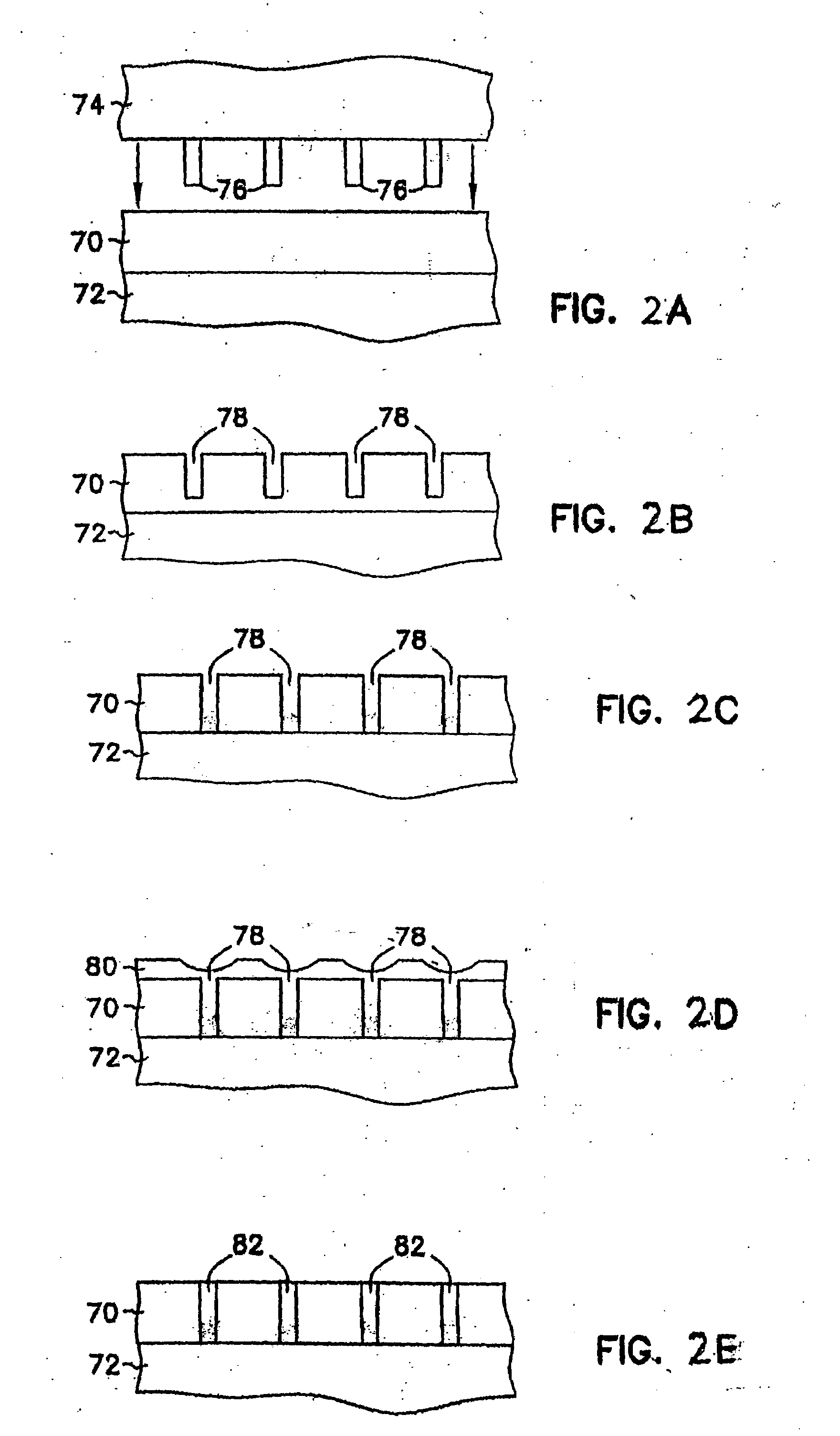Method for fabricating master stamper/imprinters for patterned recording media utilizing hybrid resist
a technology of hybrid resist and recording media, which is applied in the direction of photomechanical equipment, photosensitive material processing, instruments, etc., can solve the problems of loss of stored information, adversely affecting the realization of ultra-high areal density data/information storage, and extremely minute recording bit sizes of continuous film media
- Summary
- Abstract
- Description
- Claims
- Application Information
AI Technical Summary
Benefits of technology
Problems solved by technology
Method used
Image
Examples
Embodiment Construction
[0057]The present invention addresses and solves the above-described problems, disadvantages, and drawbacks associated with nano-imprint lithographic patterning methodologies utilized in the fabrication of master stamper / imprinters used in the manufacture of various types of patterned recording media, including, for example, bit, discrete track, and servo patterned hard disk magnetic media, while maintaining full capability with all aspects of automated manufacturing processing for formation of patterned media. Specifically, the inventive methodology addresses and solves the problem of low product throughput rate when performing high resolution e-beam processing for lithographic patterning of resist materials with ultra-small features necessitated by the requirement for further increase in areal recording density to the Tbit / in2 range. Advantageously, the inventive methodology can be practiced in a cost-effective manner without requiring capital-intensive processing techniques and i...
PUM
| Property | Measurement | Unit |
|---|---|---|
| depths | aaaaa | aaaaa |
| diameter | aaaaa | aaaaa |
| energy | aaaaa | aaaaa |
Abstract
Description
Claims
Application Information
 Login to View More
Login to View More - R&D
- Intellectual Property
- Life Sciences
- Materials
- Tech Scout
- Unparalleled Data Quality
- Higher Quality Content
- 60% Fewer Hallucinations
Browse by: Latest US Patents, China's latest patents, Technical Efficacy Thesaurus, Application Domain, Technology Topic, Popular Technical Reports.
© 2025 PatSnap. All rights reserved.Legal|Privacy policy|Modern Slavery Act Transparency Statement|Sitemap|About US| Contact US: help@patsnap.com



